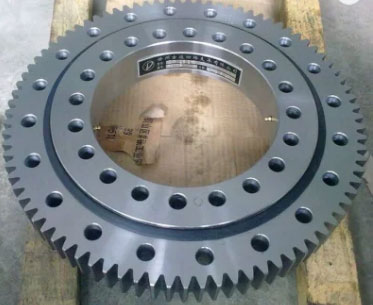Home / News / Crossed Cylindrical Roller Bearing: Design, Features, and Applications
Crossed Cylindrical Roller Bearing: Design, Features, and Applications
Crossed cylindrical roller bearings, also known as crossed roller bearings, are precision bearings that use cylindrical rollers arranged in a crossed pattern between inner and outer rings. These bearings are designed to handle both radial and axial loads simultaneously, making them ideal for high-speed applications that require high precision and rigidity.
Design and Features
Crossed cylindrical roller bearings have a unique design that allows them to withstand high loads and operate at high speeds with minimal friction. They consist of two rings, with one ring serving as the inner ring and the other as the outer ring. The cylindrical rollers are arranged in a crossed pattern between the two rings, with each roller positioned at a 90-degree angle to the adjacent roller. This arrangement of the rollers allows the bearing to handle both radial and axial loads simultaneously, with the rollers transmitting the load in a crossed manner.
One of the key features of crossed cylindrical roller bearings is their high precision and rigidity. The crossed pattern of the rollers ensures that the bearing has a high degree of rigidity, while the precision manufacturing process ensures that the bearing has a high degree of accuracy and can operate at high speeds with minimal friction. The rollers in these bearings are also designed to have a large contact area with the races, which helps to distribute the load evenly and reduce the risk of bearing failure.

Applications
Crossed cylindrical roller bearings are commonly used in high-speed and high-precision applications in various industries, including robotics, machine tools, and medical equipment. In robotics, these bearings are used to provide high-precision movement and positioning of the robot arms and joints. In machine tools, they are used to provide accurate positioning and motion control of the cutting tools. In medical equipment, they are used in imaging equipment and surgical robots to provide high-precision movement and positioning.
Crossed cylindrical roller bearings are also used in other applications that require high precision and rigidity, such as aerospace, defense, and semiconductor manufacturing. In aerospace and defense, these bearings are used in various aircraft components, including landing gear, flap actuators, and radar antennas. In semiconductor manufacturing, they are used in wafer handling equipment and in the assembly and testing of semiconductor components.
Conclusion
Crossed cylindrical roller bearings are a type of precision bearing that offers high rigidity, accuracy, and load capacity. They are designed to handle both radial and axial loads simultaneously and can operate at high speeds with minimal friction. These bearings are used in a wide range of applications, including robotics, machine tools, medical equipment, aerospace, defense, and semiconductor manufacturing. As technology continues to advance, the demand for high-precision bearings like crossed cylindrical roller bearings is only expected to increase.
- Previous: Precision Angular Contact Ball Bearing: High Accuracy for Demanding Applications
- Next: Crossed Tapered Roller Bearing: A Robust Solution for High-Speed Applications













